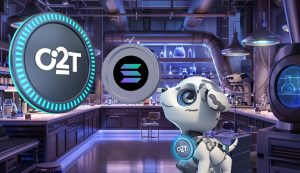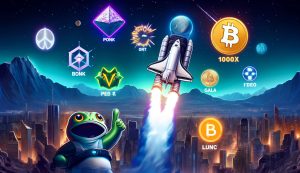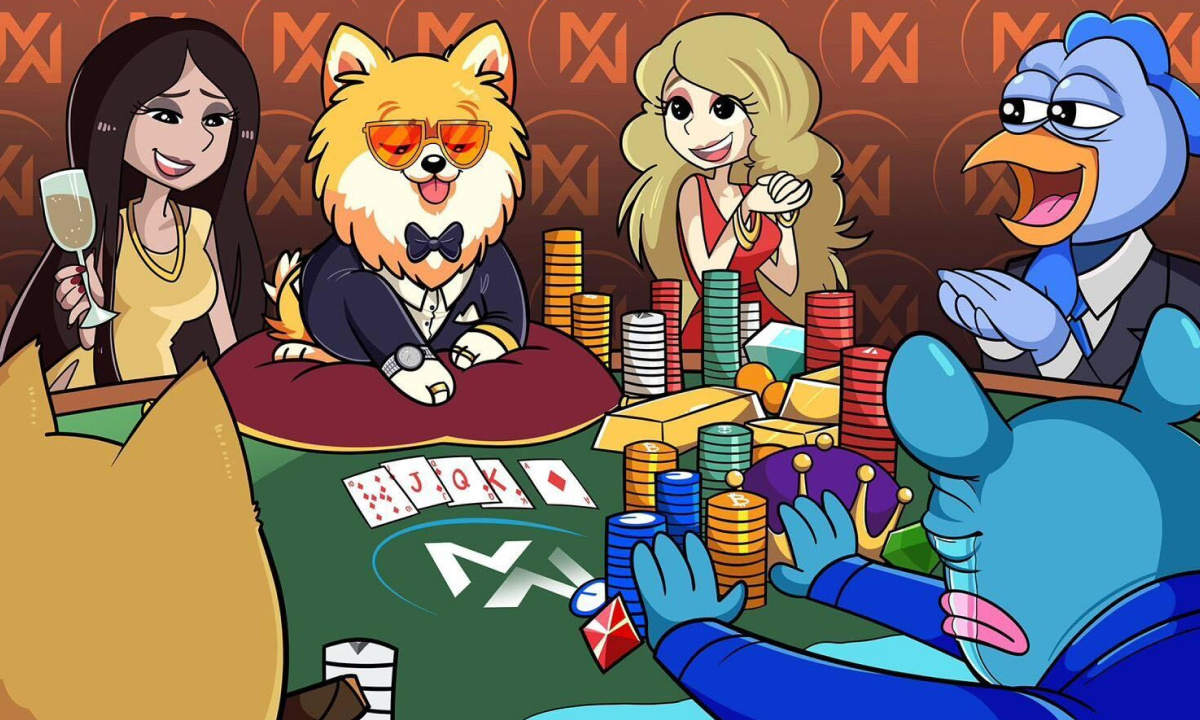Zora NFT Marketplace Review: A Platform To Protect Creators’ Rights
Royalties in the NFT market have always been a topic of interest to developers. Zora emerges as a bright spot in the NFT market as a platform that allows content creators and artists to make their own decisions with their artwork, including royalties. In this Zora NFT Marketplace review, let’s find out through the article below.
What is Zora NFT?
Zora is a decentralized protocol that allows anyone to buy, sell and create NFT assets on the platform.
This is a space for creators and collectors to enjoy Ethereum and the opportunities it creates. The platform provides tools to turn your artwork, song, video, podcast, animation, or meme into an NFT collection.
It’s not just for creators; we’re also for collectors, with access to personalized profiles and the ability to explore our homepage feed to scroll through live and mintable collections from the ZORA community.
Zora’s goal is to focus on the rights of creators and artists with the desire to change the way they receive the royalties they deserve with each NFT collection. Therefore, Zora is more than just an NFT Marketplace, but is also a place to provide a range of tools to help everyone build unique works of art on the platform.
Zora NFT Marketplace Review: Highlights
Works on-chain and optimizes gas
To start with Zora NFT Marketplace review, all Zora v3 activities occur on-chain, including NFT listing and trading activities. Users can check that information on the Ethereum blockchain. This sets Zora v3 apart from OpenSea and Rarible, as most of their operations are off-chain. In addition, these operations on V3 also save significant gas costs compared to the above competitors.
Listing non-custodial items
Normally in other NFT Marketplaces, when listing items, users need to authorize their NFT holding protocol to be listed for sale. However, at Zora, they can list NFT without having to hand over NFT to the exchange. These are known as “non-custodial listings”, allowing merchants to keep NFTs in their personal wallets until they are sold successfully, giving users complete control over their NFTs.
Royalties
If an NFT from Art Blocks, Foundation, Manifold, or any other collection is built to the Royalty Standard EIP-2981 and trades on ZORA, royalties will be paid instantly on-chain.
More specifically, Zora has a built-in royalty registration mechanism (Royalties Registry) that helps owners of each NFT collection to decide their own royalty collection mechanism on Zora Marketplace. In addition, this platform also supports NFT collections on other platforms or tools with copyright registration, such as OpenSea, Rarible, SuperRare, …
Features Finder Fee
Finder Fee is an incentive mechanism for users and content creators to find buyers for NFT collections. This mechanism can be installed when a content creator lists an NFT on the V3 Marketplace.
To earn a commission from Finder Fee, a creator simply needs to provide a personal address during the listing or creation of a referral link of the NFT collection. From here, the referrer will receive a commission from the protocol if an NFT buyer is found through the referral link. This is a strong incentive for projects and businesses to integrate NFT on top of the protocol.
Zora NFT Marketplace Review: Main tools
Zora V3
With Zora NFT Marketplace review, this is a revamped NFT Marketplace with many new features, especially a platform that ensures royalty payments for artists are handled entirely on-chain. In addition, the platform uses a new architecture that allows Zora DAO to propose and update new features on the platform.
A new feature is “Finder Fees” introduced in Zora V3 to pay commissions to NFT brokers. If a user successfully refers someone to buy NFT, they will be paid a commission through the referral link.
Zora Network
The Zora Network is built on top of the open-source OP Stack, maintained by the Optimism Collective. The Layer 2 network eases the transaction burden on Ethereum by processing transactions offline. These offline transactions are then aggregated and posted back to the Layer 1 blockchain in bundles, known as proofs. These proofs ensure the security and provability of all transactions made on the Network.
- Transactions confirmed in seconds
- Mining an NFT for less than $0.50
- Open up new possibilities on the chain
Create
Creator contracts make it easy to deploy and sell an NFT collection. These contracts allow anyone to deploy an NFT collection in seconds. In addition, these contracts provide built-in sales mechanics, making it easy to both deploy a collection and sell the initial mints.
- Goerli Testnet UI – Test out deploying a contract
- 1155 Contract Code
- 721 Contract Code
Zora API
The API makes it easy to retrieve NFT metadata, monitor on-chain events, analyze sales activity, and so much more.
Key Features:
- Sales info from every marketplace
- Data on every Ethereum NFT contract (Transfers, Mints, etc.)
- Media is encoded to provide assets at different sizes
- Automatically syncs newly deployed NFT contracts
- Fill orders made on OpenSea (Seaport)
- Text-based search for discoverability
- And much more
There are also a number of other functions the platform has created to help creators:
- Nouns Builder: This is a tool that helps content creators create DAOs in just a few minutes.
- Zora Development Kits (ZDK): This is a toolkit that helps internal creators access Zora’s APIs without GraphQL knowledge.
- NFT Hooks: This is the place to interact and retrieve data with Zora API
- NFT Rendering: This is a tool to process elements such as text, images, video and audio displayed on NFT.
Zora NFT Marketplace Review: Fee
Mining fee
Zora will charge a small flat fee to collectors of NFT mints created with the Creation Kit. Fees will be clearly displayed to collectors prior to confirmation of minting. Mining fee is 0.000777 ETH for each NFT minted.
Collect Fee
For collectors who use the Collect feature and complete a secondary purchase of an NFT. The Collect Fee will be clearly displayed to collectors before confirmation of the purchase. The Collect Fee for each purchased NFT is 0.000777 ETH + 2.5% of the listed purchase price.
Note:
Zora does not charge a fee for listing and selling your NFT on the platform. You are required to have ETH in your connected wallet to cover gas fees for minting, selling, or bidding.
Zora does not charge any fees for creating your collection when using our Creator Toolkit. However, you are responsible for the Gas Fees required to create your collection(s) using the Creator Toolkit.
Zora NFT Marketplace Review: Roadmap
January 1, 2021: Zora officially launches on Ethereum.
January 27, 2021: Announcing the open source code of ZoraOS.
January 2022: Introducing Zora V3
June 2022: Organized Zora API Hackathon and launched Zora Development Kits.
July 2022: Zora cooperates with ETHGlobal to organize Metabolism Hackathon event
February 2023: Base Blockchain uses Zora as mint NFT Collectibles “Base, Introduced”
Zora NFT Marketplace Review: Project team
Jacob Horne is the co-founder of Zora. He has extensive experience in the role of Product Manager. Prior to that, Jacob worked at Coinbase for over three years, responsible for the management and development of various products such as Coinbase Pro and Coinbase Mobile.
After leaving Coinbase and deciding to co-found Zora, with product management expertise and crypto industry experience, Jacob has been with the development team from 2020 to now.
Zora NFT Marketplace Review: Basic User Manual
Setting up and Verifying Your Profile
Connect your wallet with Zora.
Select the ‘Profile’ tab from the home screen.
Select ‘Set up your Profile‘ to begin verifying your profile.
To verify your profile, you will need to connect your Twitter account.
To do this, you will select ‘Tweet to verify’ and tweet the generated message.
Then copy and paste the URL of that tweet into the following text entry box. Once you have completed this, your profile is verified, and you can begin exploring your profile.
Mint an NFT
Navigate to the mint page of a collection, and ensure that your wallet is connected.
From here, you can select “mint”
Using the +/- buttons select how many NFTs you want to mint. The number of NFTs you can mint may also be affected by a mint limit set by the creator.
For each NFT you mint, you will pay a fee of 0.000777ETH. This is per NFT and not per transaction. You learn more about our mint fees here.
Once you are ready, select “mint” and confirm the transaction when prompted by your wallet. When the transaction is successful, you will be shown the following screen.
Collecting NFT
Using Zora’s collect feature, you can purchase NFTs from the secondary market through a creator’s mint page. If a collection has been minted out on Zora, a “Collect” button will show on the collection’s mint page.
Select “Collect“, and you will be brought to the purchase page.

From here, you can see the total price of your purchase, including the Zora fee, which is 0.000777 ETH + 2.5% of the listed purchase price per collected NFT.
Once you are ready, select “Collect” and confirm the transaction when prompted by your wallet. When the transaction is successful, your NFT will be sent to your wallet.
Conclusion
Zora NFT Marketplace review is a rare NFT decentralized platform that empowers content creators and artists to decide on their work. It also makes it possible for anyone to create and trade NFTs using the toolset available on the platform.
Join us to keep track of news: https://linktr.ee/coincu
DISCLAIMER: The Information on this website is provided as general market commentary and does not constitute investment advice. We encourage you to do your own research before investing.





























